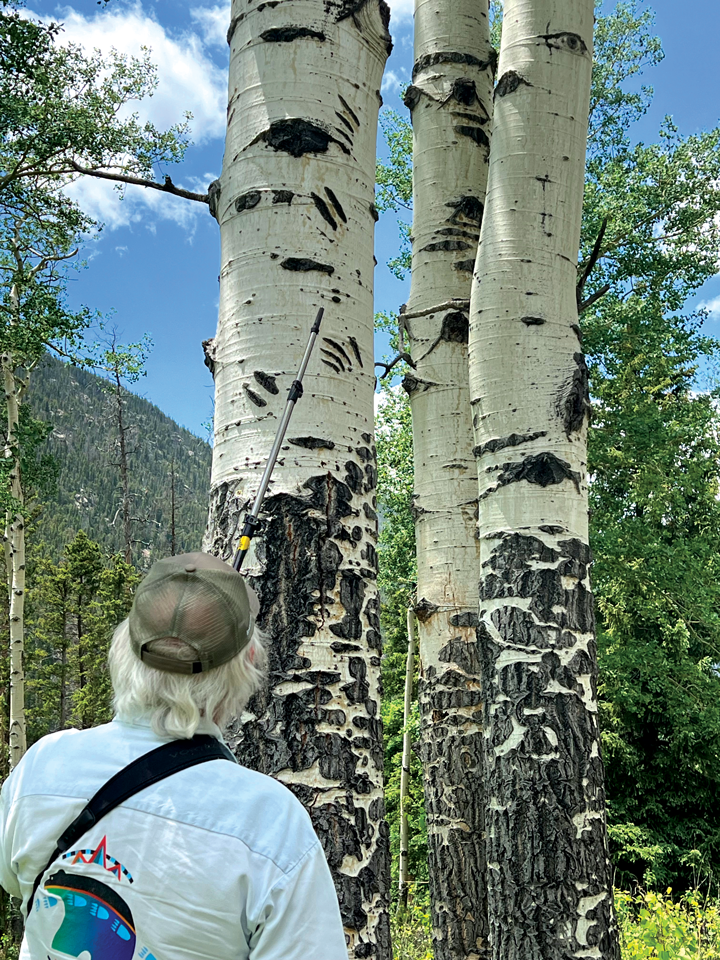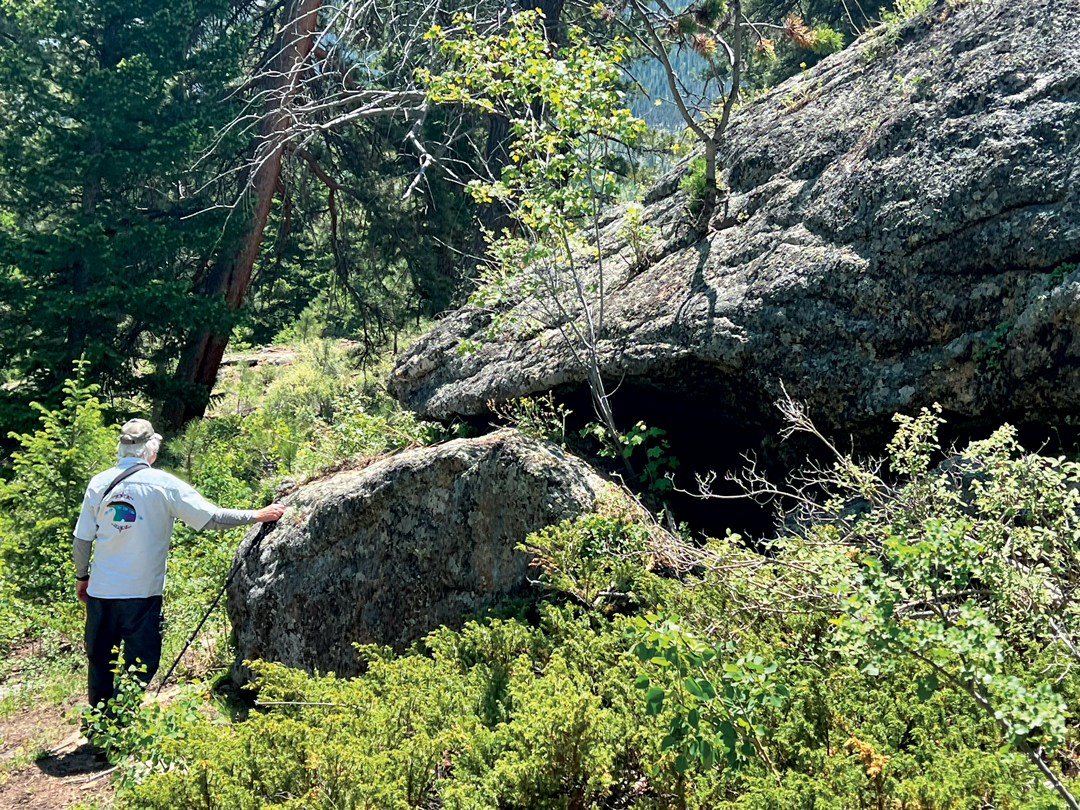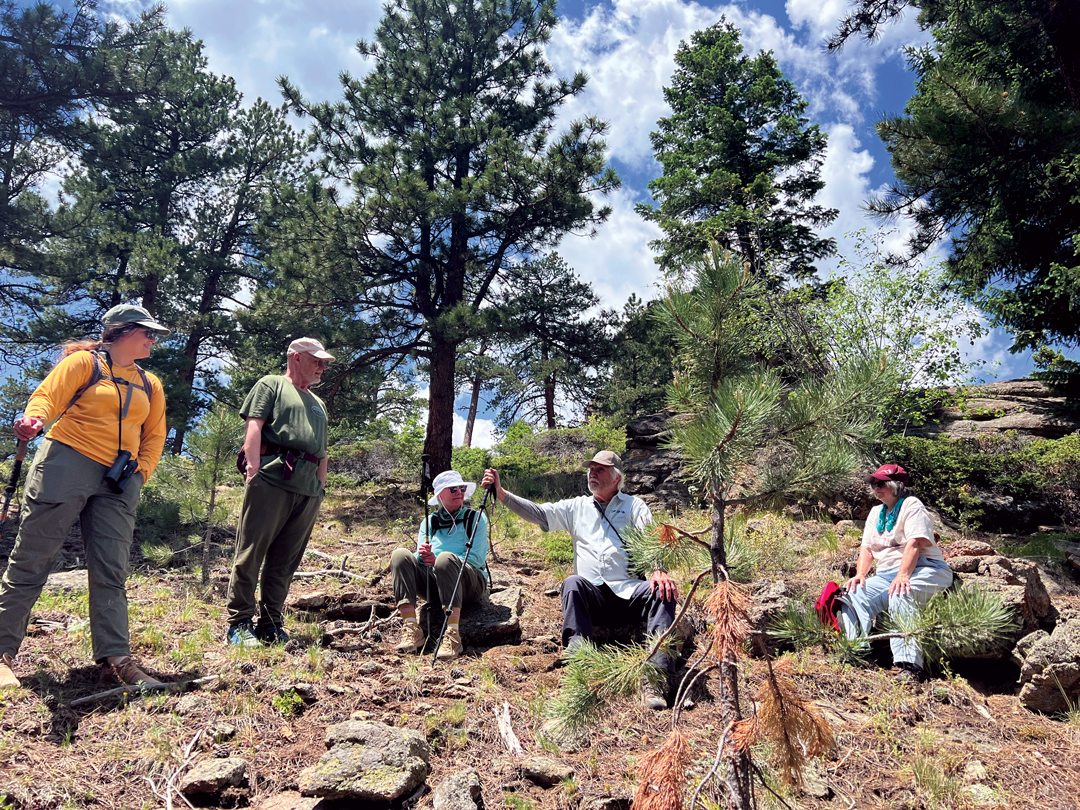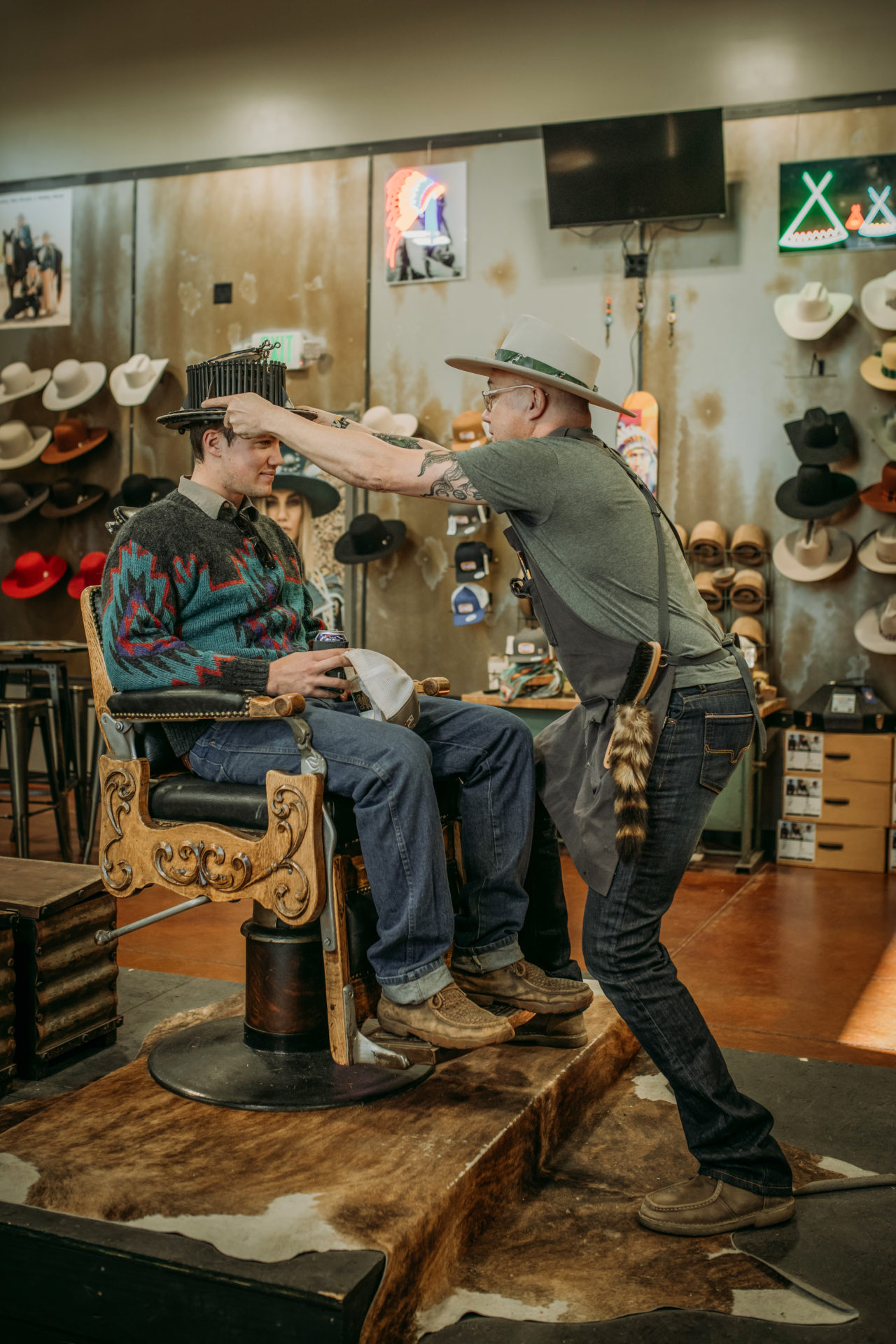It’s 1 p.m., and I’ve been under the guidance of the Rocky Mountain Conservancy and the “old grizzly” leading the Bears of North America and Rocky Mountain National Park class for four hours. I can already spot many signs of wildlife that would have escaped me before.
W. Perry Conway is a wildlife photographer who wears his Civil War-era name well. As we walk up a hill full of sagebrush, off Fall River Road, he points out a bear den and shows the group some bones from a deer, even the skull, which warms my heavy metal heart. But mostly, I’ve discovered just how much wildlife poops.
Poop—sorry, scat, as biologists call it, probably because it sounds nicer—is everywhere on this hill that we’re bushwhacking our way up, and yet, before Conway opened my eyes to it, I would have missed it too. I’ve mostly seen elk and deer scat tucked away in the bushes, and I now know the difference because, as one of the conservancy guides informs me, you can fit deer scat in your nose. I don’t ask how she knows this because I don’t want to know.
What’s missing is bear scat, and Conway doesn’t mind admitting that he’s relieved. “This is the one class,” he says, “where I hope to not show you our subject.”
The subject, after all, is bears, one of dozens of Field Institute classes offered by the conservancy that are taught by instructors like Conway. The conservancy raises money through these educational excursions, but they also hope to spread the word about the many wonders of the park and teach people how to preserve it during their visits.
Black bears are the only species of bear you’ll see in Colorado, and they act like nervous cats, unless their cubs are nearby, Conway says. There have been just four deadly attacks by black bears since 1900, but they still weigh as much as a Denver Broncos offensive lineman and run faster than the quickest wide receivers. They could, in other words, take down anyone in our class of a half-dozen people, a theory Conway doesn’t want to test.
This doesn’t stop him from pointing out signs that bears are in the area or giving a morning lecture that includes a grim warning that “polar bears will kill you” without a second thought.
The last grizzly
Before the afternoon portion of the field trip, Conway entertains and educates us with photos of bears from around the world while he speaks about one of his favorite subjects in his work as a biologist and wildlife photographer. He shows us many of his slides taken the old-fashioned way, with cameras worth thousands of dollars instead of a smartphone.
Colorado’s last grizzly bear was killed in September of 1979 when Ed Wiseman, a hunting guide, was attacked by the bear and stabbed it in the neck with an arrow. He spent a month recovering in a hospital in Alamosa, but that didn’t stop authorities from questioning him at his bedside. He was cleared after a polygraph test helped authorities determine that he acted in self-defense.
The attack was a shock, given that grizzlies were thought to be extirpated from Colorado around 1951. The bear’s skeleton and furry hide now reside in the Denver Museum of Nature & Science. Conway has visited the hide many times.
“I’ve touched the skin, and it felt like something sacred,” he says. “You look at that and say, ‘Darn, I’m sorry that had to happen.’”
Now there are only 20,000 grizzlies in the U.S. In contrast, there are 400,000 black bears in the U.S. and 11,000 in Colorado, with about 25 of them living in Rocky Mountain National Park, Conway says.

Conway says the three lines of scratches on this aspen tree came from a black bear.
Bear behavior
Black bears aren’t nearly as ferocious as grizzlies, though they will charge to scare you, Conway says. Bears fascinate people, including himself, because of our “primordial interest we have in animals that can take us out,” he says.
“But there’s also the cute factor,” he says, showing a photo of a baby bear resembling a fluffy teddy bear.
Bears can smell fish from a mile away, which is why Conway shakes his head when residents and campers leave food out or in their cars. Still, he’s never seen a bear in Rocky Mountain National Park. Alpine tundra covers a third of the park, which doesn’t provide much grub for them. But he has seen them wandering around residents’ homes in Estes Park, which offer far more opportunities for food.
“People don’t do a good job with their garbage,” Conway says.
Black bears eat mostly plants—up to 90 percent of their diet, Conway says—and from mid-summer until late October, they’re fattening up for their long winter’s nap. Bears love berries, so most of their food comes from the red mountain currant, common juniper and kinnikinnick. You might also find bushels of chokecherries off Bear Lake Road, Conway says. The bears supplement their diet by ripping open logs and gobbling up pawfuls of miller moths and grubs. They eat 20,000 calories a day.
Imagine trying to get all of those calories from a salad. As a result, this is the time of year when bears cause the most problems. They’ll wreck vehicles, bust open grills, break down front doors and, of course, get into any trash cans that aren’t up for the challenge. Once they find a food source, they will go back to it time and again.
If this happens in a public place or on private property, wildlife officers will try to haze the bear away, but if the bear becomes a threat, they will eventually put it down. This is why officers have the saying, “A fed bear is a dead bear.” And yet, there are many ways to keep them away, like securing trash cans and homes and simply locking car doors, Conway says.

Conway points out a bear den in Rocky Mountain National Park.
Signs of bears
We don’t see a bear—the odds were small, Conway reminds us—but we spend the rest of the afternoon with him as he points out more proof that bears do live in the park.
The starkest reminder is also one you’d probably miss if Conway didn’t point it out: There are three slash marks about 10 feet up on an aspen tree near a busy road. Conway thinks the bear was running after being spotted and climbed the tree for safety.
Adult back bears weigh around 275 pounds (females weigh a little less), but they can run up to 35 mph and climb trees, so it’s a good thing they’re not as aggressive as polar bears. Conway says he can’t outrun a bear, but he only needs to outrun the slowest in our group. I think he’s kidding.
Later, he takes us to a tree. A bear has, to put it mildly, abused the crud out of the poor thing. It peed on it, clawed it and rubbed up against it. I’m honestly not sure the tree is alive. Apparently, this is a way of telling other bears to move on. Conway shows us these things, along with ways to identify their scat, because he believes it’s important to know that when we visit Rocky Mountain National Park or any place like it, we are also visiting the homes of many other animals. We should cherish, respect and, at the very least, be a good guest to it, which is also the mission of the conservancy and why they put on classes like these.
“I’d like for you to be a bit more aware of what’s around,” Conway says to us.
As we climb back into the small tour bus and head to our cars, we see a large group of people pointing with cameras and smartphones and cars chaotically parked. Sure enough, a moose is wading in a pond just off the road. Moose sightings are more common than ever, but they’re still a rare treat.
Conway showed us scat, scratch marks and bones, but a small party of excited onlookers is the surest sign of wildlife I’ve seen in the many years I’ve spent in the park.
Other Wildlife in Rocky Mountain National Park*
Elk
Best places to spot it: Beaver Meadows, Trail Ridge Road or everywhere during the mating season in early fall, when males bugle for their harems.
Odds of seeing it: Fantastic, particularly in the fall.
Yellow-bellied Marmot
Best places to spot it: The alpine tundra of Trail Ridge Road or Fall River Road in rocky areas; alpine lakes such as Bierstadt and Mills lakes.
Odds of seeing it: Great, especially if you have a pack full of tasty treats. Don’t feed the marmots, and don’t leave your pack behind (they’ll rip it open).
Mule Deer
Best places to spot it: Lower elevations in open areas.
Odds of seeing it: Excellent, though they aren’t as common as elk and are smaller.
Moose
Best places to spot it: Sprague Lake or in willow thickets in the Kawuneeche Valley on the west side of the park.
Odds of seeing it: Seeing moose is rare, but there are many more than there were 20 years ago.
Pika
Best places to spot it: On hikes in rocky areas above the tree line.
Odds of seeing it: Good if you can hike above the trees. Listen for their call, which sounds like a squeaky toy.
Bighorn Sheep
Best places to spot it: Up the Big Thompson Canyon, in the Milner Pass area or at Sheep Lakes.
Odds of seeing it: Decent at the areas listed. They are difficult to spot but not impossible.
White-tailed Ptarmigan
Best places to spot it: Hiking on the alpine tundra, especially the Longs Peak trail.
Odds of seeing it: They are fairly common but difficult to spot.
Steller’s Jay
Best places to spot it: Common picnic areas, lakes and Trail Ridge Road.
Odds of seeing it: Fantastic. You’ll likely see one as you enjoy your lunch on a short hike.
* Source: National Park Service







